
Thank you! Your submission has been received!
Oops! Something went wrong while submitting the form.
Call us
Monday to Friday 9:00am to 5:00pm
800-345-678.
800-345-678.
Moving can often seem like a continuous stream of stressful events. From the repetitive process of reserving a truck to the challenges of modifying bookings, coordinating with moving assistants, and handling a large truck, do-it-yourself movers using U-Haul can find the moving experience both disjointed and frustrating.
This all-in-one virtual assistant redefines the entire moving journey. It offers responsive voice-guided features that optimize tasks, enhance coordination, and provide real-time alerts and guidance. It's particularly adept at intelligently addressing complex requests, which is a valuable asset for movers under pressure. By doing so, it significantly boosts the efficiency and overall enjoyment of the moving process while simultaneously alleviating driving concerns through hands-free, real-time support.

Developing an interactive educational experience that leverages MR technology
2023 Oct - Dec ( 7 weeks )
4 Designers ( Myself, Annie, Jo, Rini )
Figma, Figjam, After Effects, Notion, Adobe Aero, Quest 3
UIUX design, research & strategy, branding & visual design
With a decreasing number of young adult visitors to the National Aviary Museum, our team set out to design an interactive educational experience that leverages mixed reality (MR) technology. The goal was to create a multi-sensory environment that encourages young adults to explore and learn about the world of birds, sparking curiosity and passion for avian life.
Our team acknowledged the current limitations of the Quest 3 headset. However, we are eager to explore a future where mixed reality devices are as lightweight and unobtrusive as everyday eyewear.
Our final deliverables included a group presentation with concept slides and a concept video. We also demonstrated part of the MR experience using the Meta Quest 3, along with augmented reality effects created with Adobe Aero.
Collaborated with peer designers to leverage cutting-edge technology in creating an interactive educational gaming experience for young adults. As the Product Designer, I was responsible for research, concept development, user journey mapping, and UI design for both mobile and mixed reality (MR) platforms, including AR experiences built with Adobe Aero. I also contributed to visual design, creating the logo, defining the color palette, and designing souvenir card graphics.
The National Aviary is a museum that allows visitors to have close contact with birds in an immersive habitat. We've identified a gap among young adults who feel disconnected from traditional museum experiences but express interest in new technology. Our design challenge is centered on creating an immersive learning experience for young adults at the National Aviary.
Our primary objective is to design an experience that blends the Aviary’s immersive environment with interactive Mixed Reality (MR) technology, adding an extra layer of engagement, particularly targeting Gen Z individuals.





GAMIFIED LEARNING EXPERIENCE DESIGN
Learning is an active and conscious knowledge-construction process. Learning theories provide the foundation for how individuals construct knowledge and engage in meaning-making. Educational games need to be well-designed to incorporate learner engagement, a crucial component of educational effectiveness. Flow theory forms a foundational aspect of designing educational engagement. It describes a state of flow wherein learners are deeply engrossed in an activity, losing track of time and finding heightened interest and enjoyment (Csikszentmihalyi, 1991, 1997). The theory suggests three channels for learning: the boredom channel, flow channel, and frustration channel (Sharek & Wiebe, 2011).


Our team also utilized various maps to understand the space we were designing for, particularly because the museum has multiple rooms. We considered technological feasibility with expert advice, and ultimately, we developed a user journey map that illustrates the experience across different stages and locations, highlighting modality differences in the context of the museum environment.
The diagram illustrates various components, interactions, and relationships within the National Pittsburgh Aviary. It provides an overview of how different elements of a system are connected or interrelated
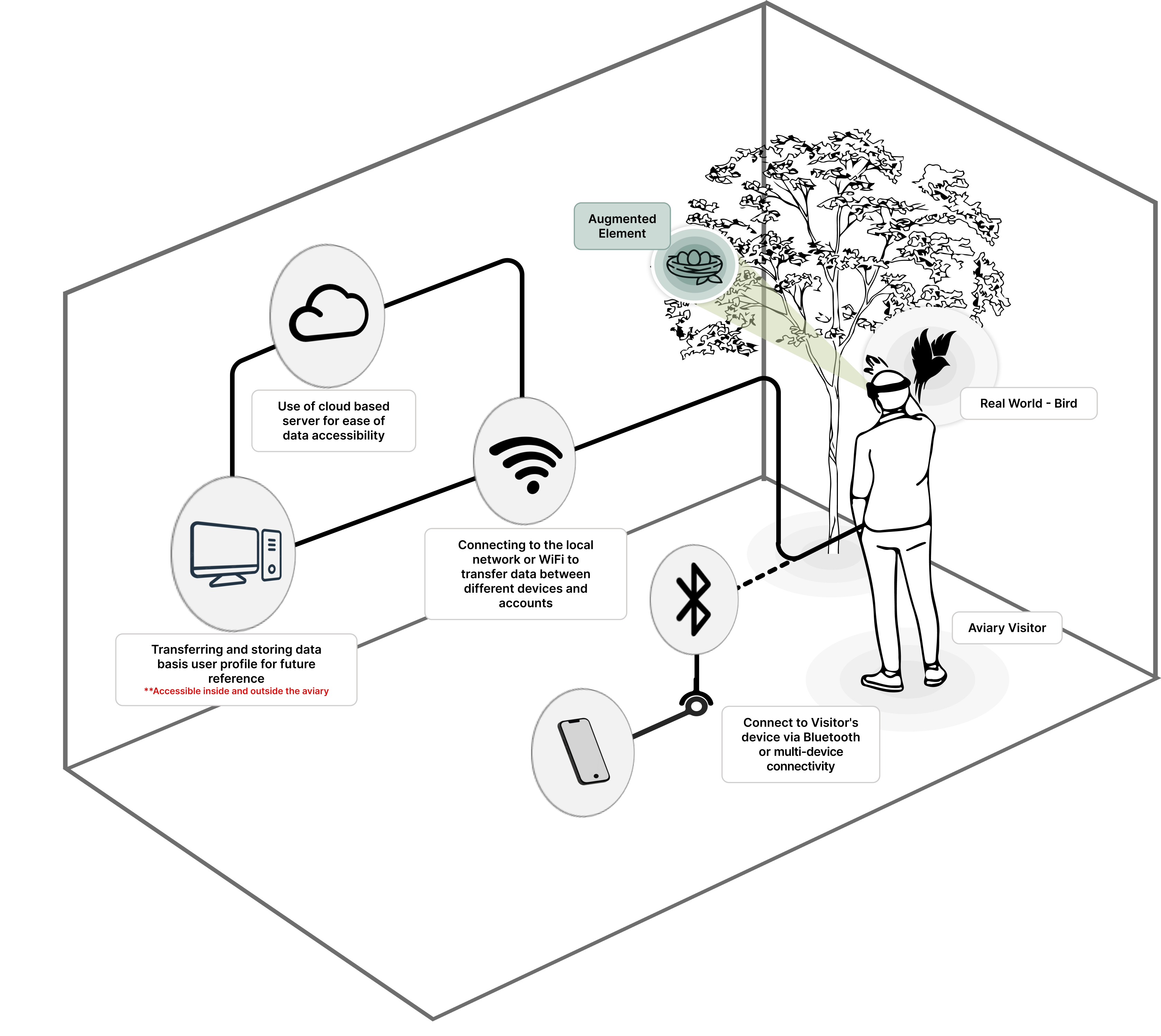
The diagram illustrates the layout of the National Aviary. Our design focus is on the Tropical Rainforest area, which features expansive open spaces where birds can either be observed from a distance or walk freely in close proximity to visitors.
From this point, we considered the complete visitor journey—from entering the museum and navigating to the exhibit area with the MR device, to returning the device at the end of the experience.
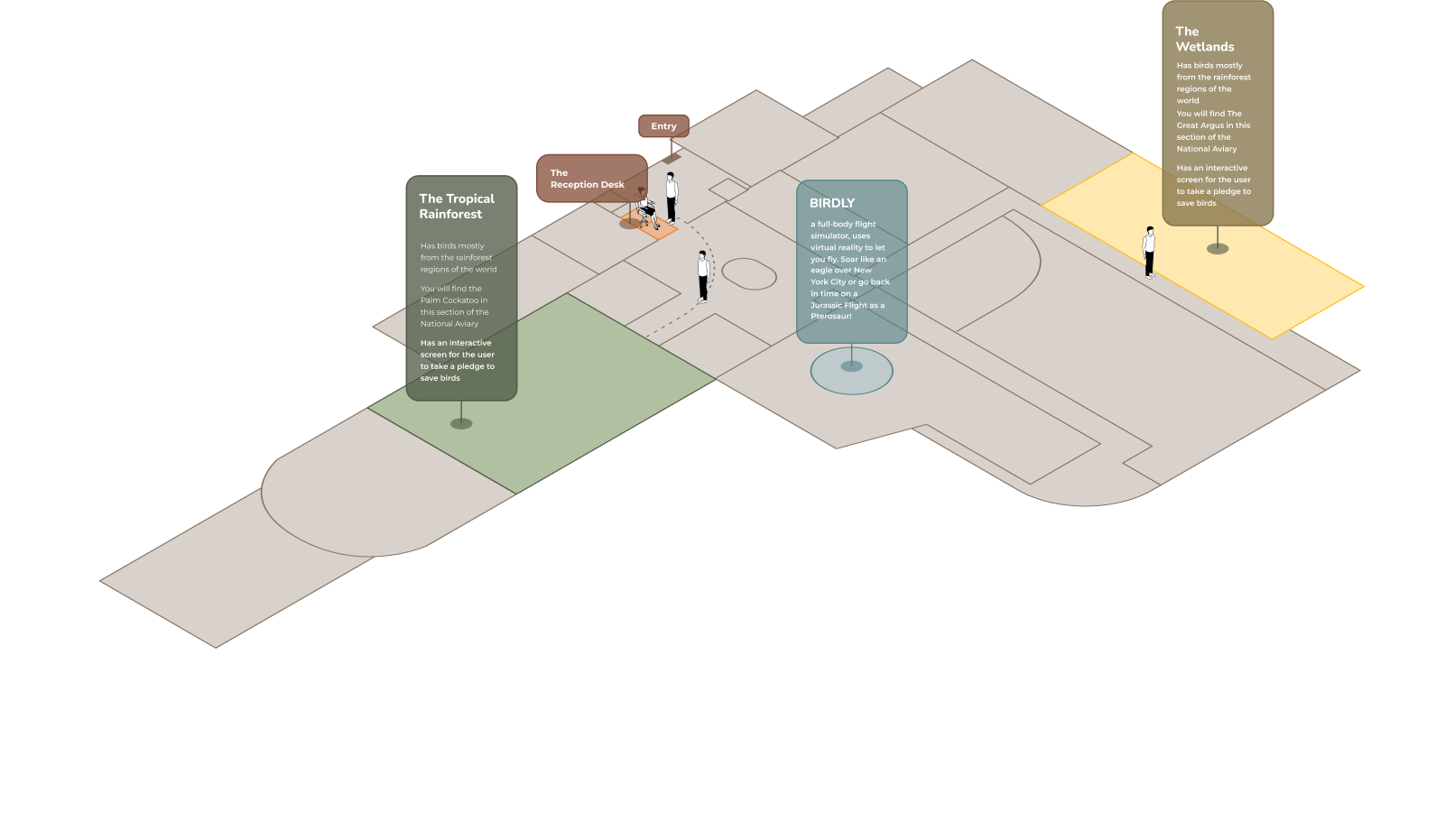

Our team also recognized several challenges in observing and learning about birds that are either distant or temporarily inaccessible. The spatial separation between visitors and birds often varies significantly, with many positioned at considerable distances. Our design strategy needed to accommodate both near and far interactions, ensuring that visitors could engage effectively in either context.
Additionally, many birds move quickly through the environment or remain hidden within foliage and structures, making them difficult to observe with the naked eye.
Moreover, key aspects of avian life—such as mating, nesting, and other unique behaviors—often go unnoticed by visitors.
By leveraging mixed reality (MR) technology, we identified opportunities to bridge these gaps, enabling visitors to experience more intimate and informative encounters with otherwise elusive birds.
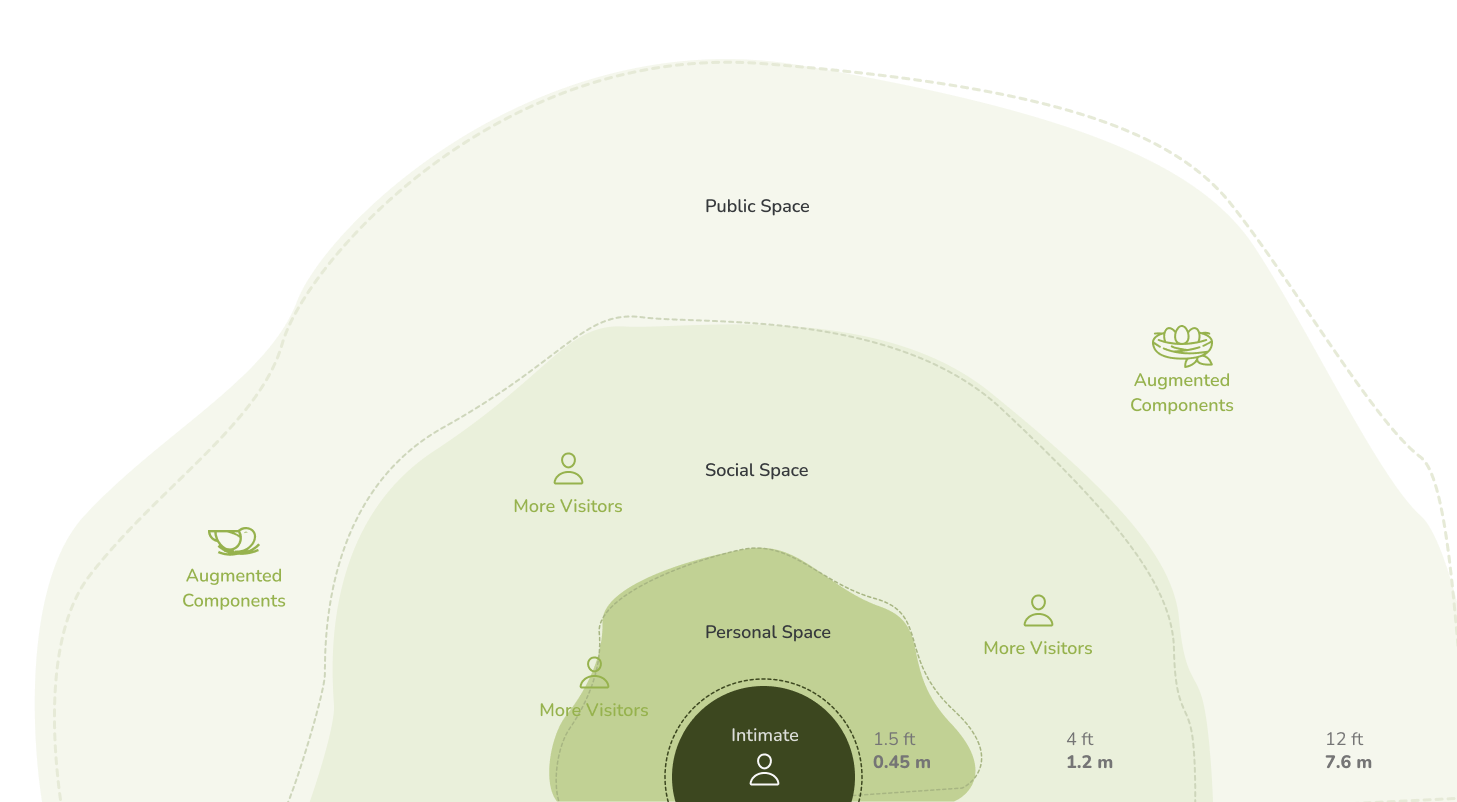

DESIGNING MR INTERACTIONS IN AVIARY
The designed experience begins with an onboarding process to facilitate swift acclimatization to the advanced MR technology, encompassing gestures, library features, and settings. Following this introduction, visitors are guided to observe birds using MR headsets, allowing them to interact with and learn about avian species. The gamified user pathways are crafted to motivate visitors to seek out tokens and compile a comprehensive bird library.
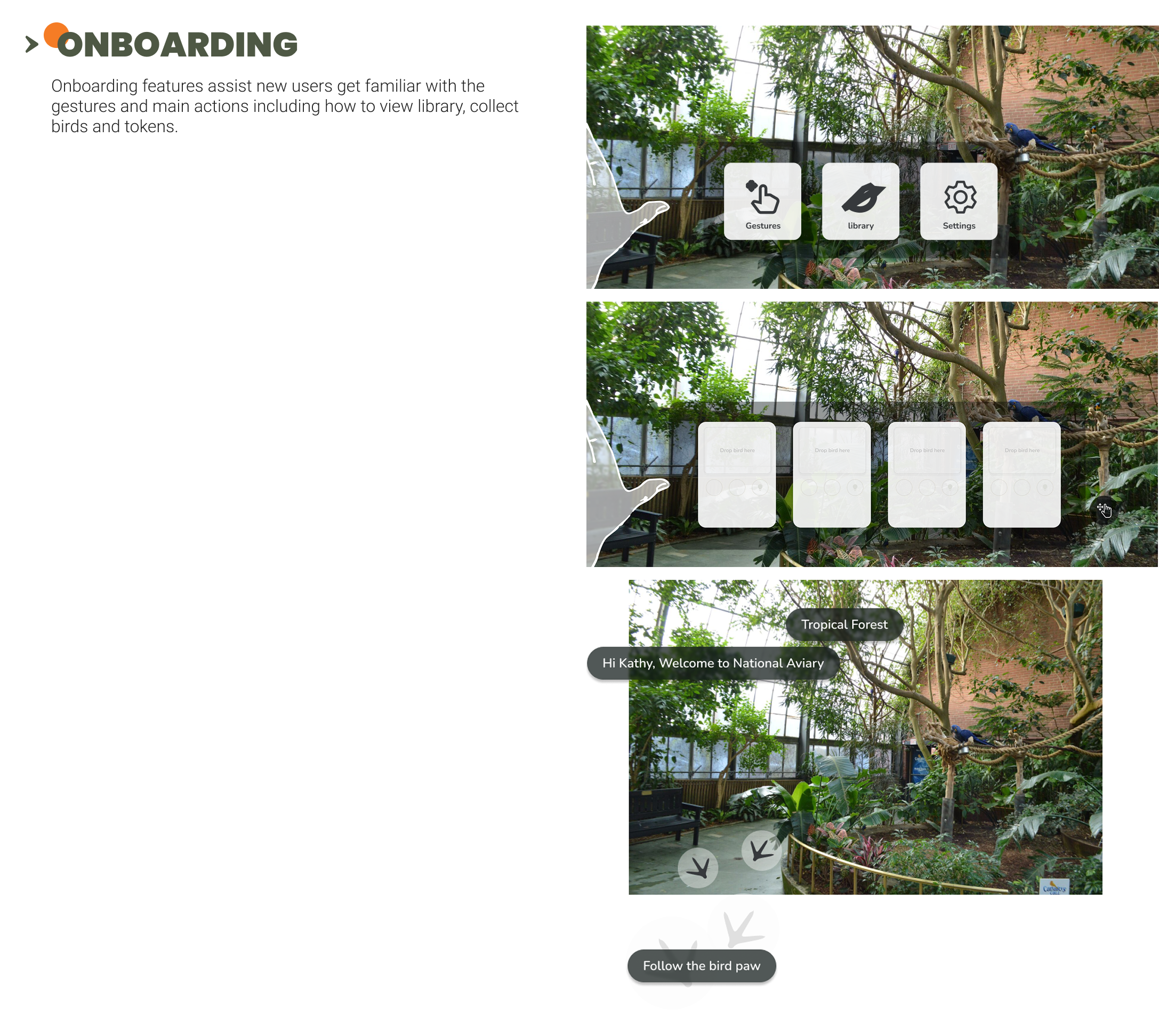
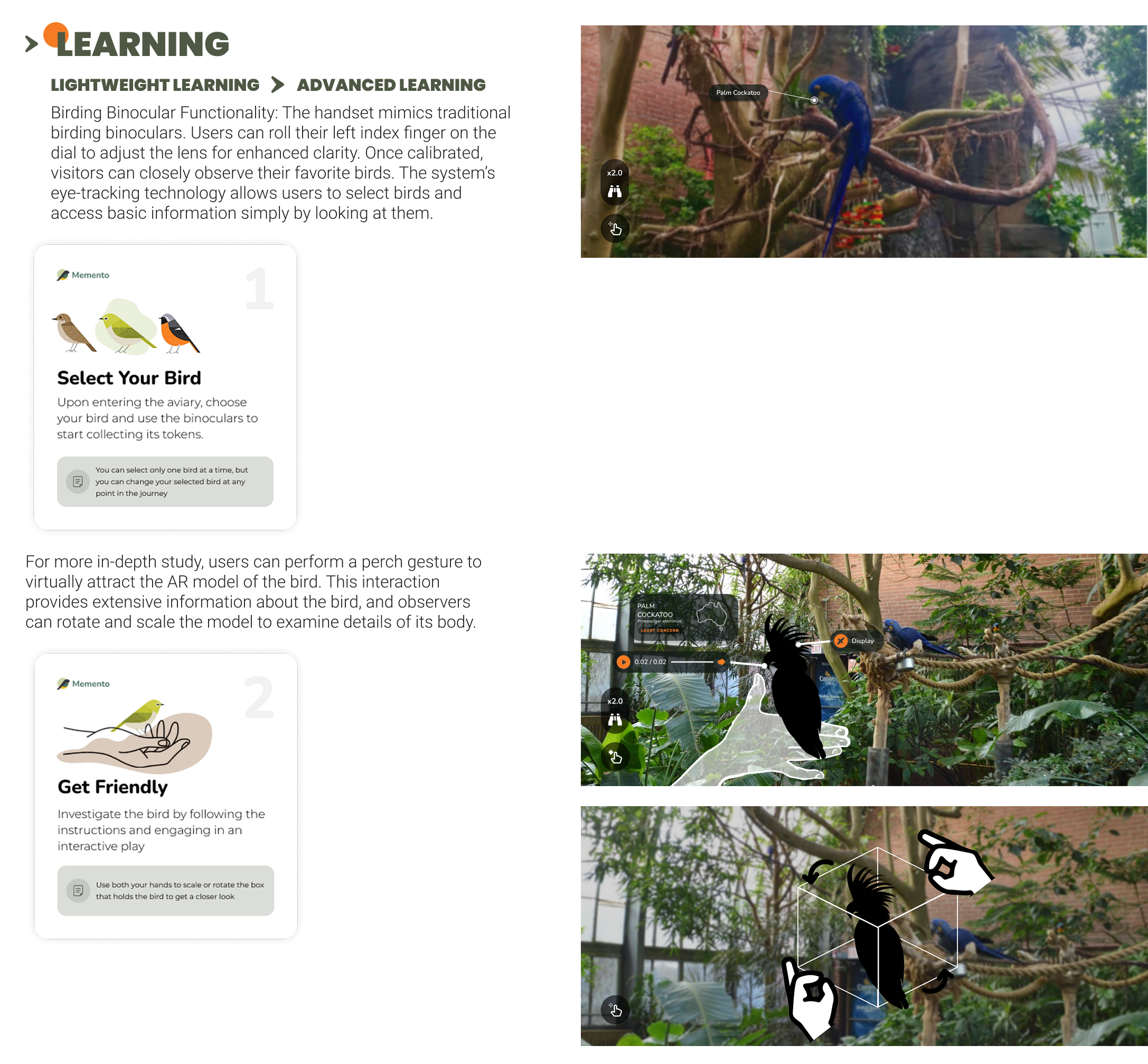
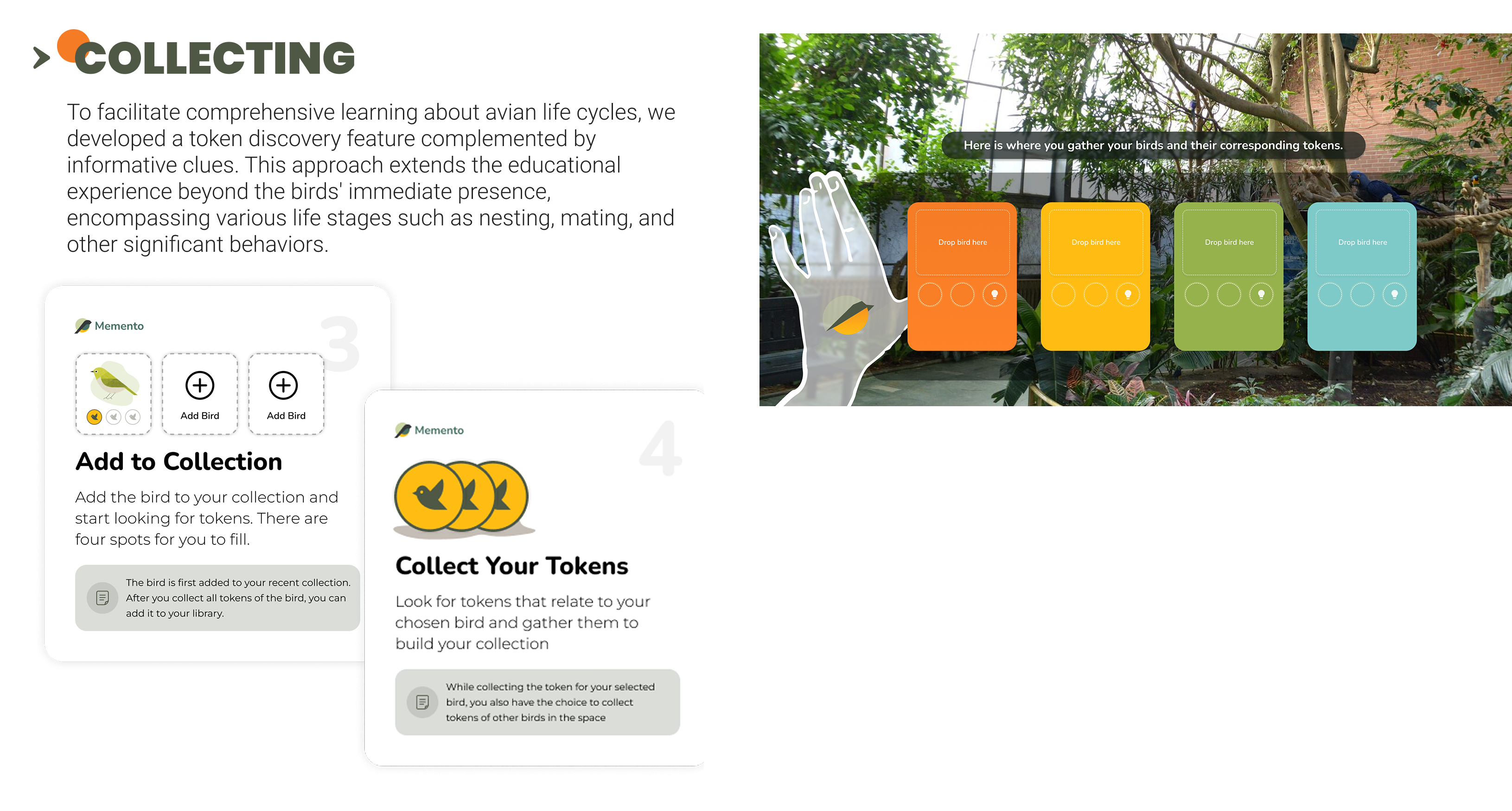
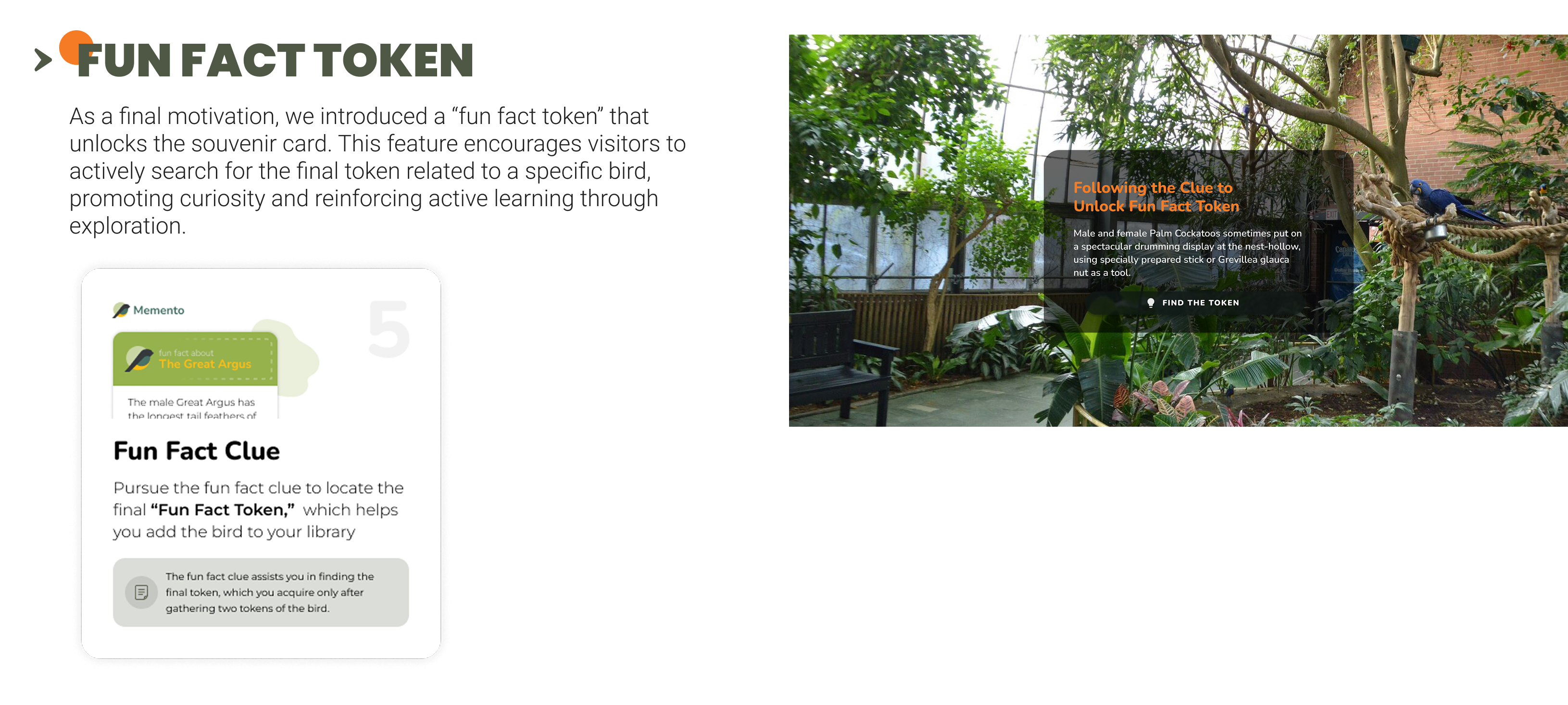
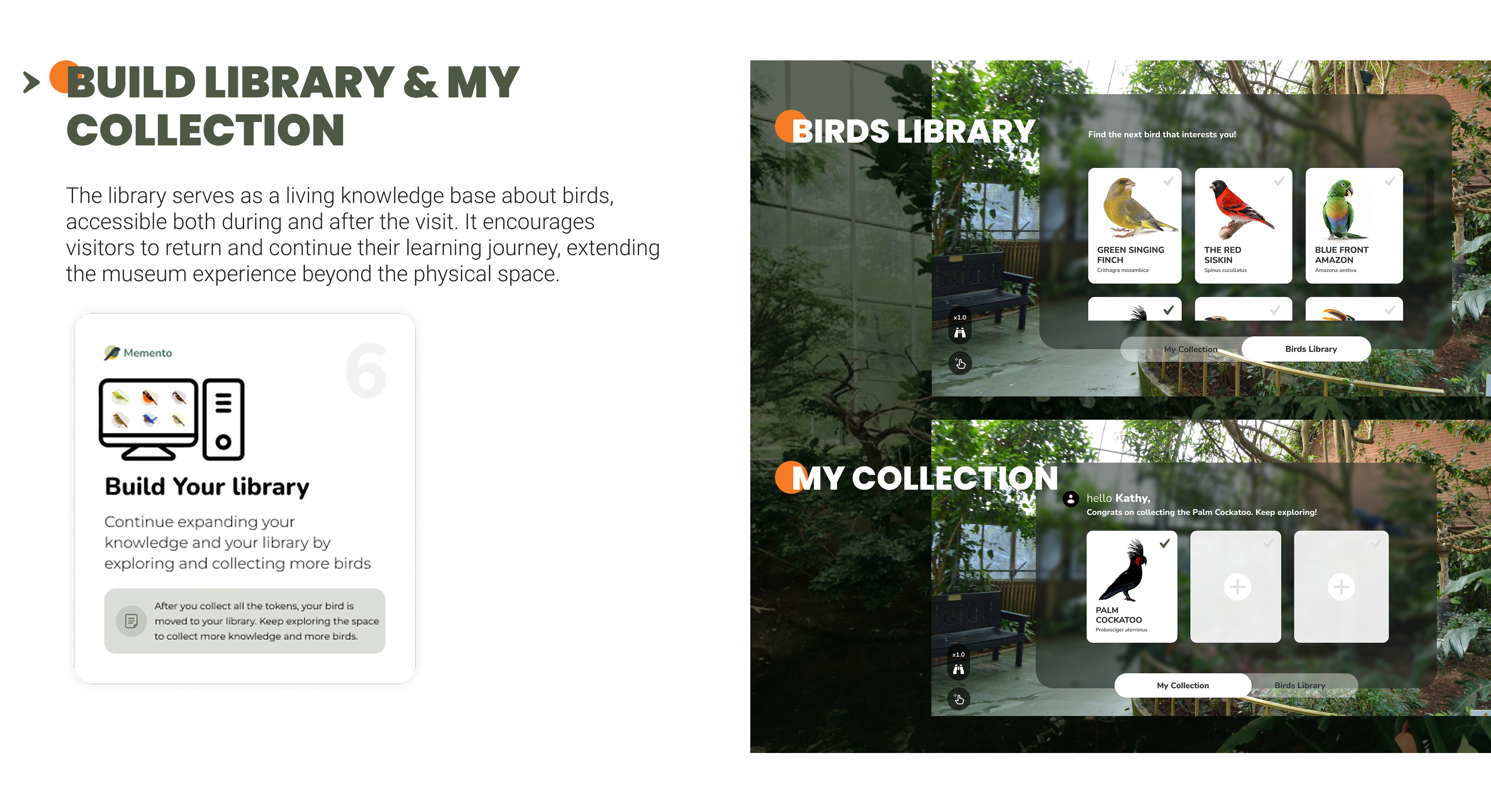


ASSISTED TECHNOLOGY DESIGN FOR PRE/POST EXPERIENCE DESIGN
Sammy, through alerts and notifications, integrates with Apple Maps to provide users with real-time safety alerts, ensuring a safe and pleasant driving experience.
Helps users stay informed by keeping track of upcoming tasks and appointments, and sending notifications about changes in order status, helper confirmations, and more.
Our goal for the new branding system is to design within the constraints of the current U-Haul branding while bringing a fresh perspective. I assembled the main components of the interface and crafted a clickable prototype for product demos and user testing.

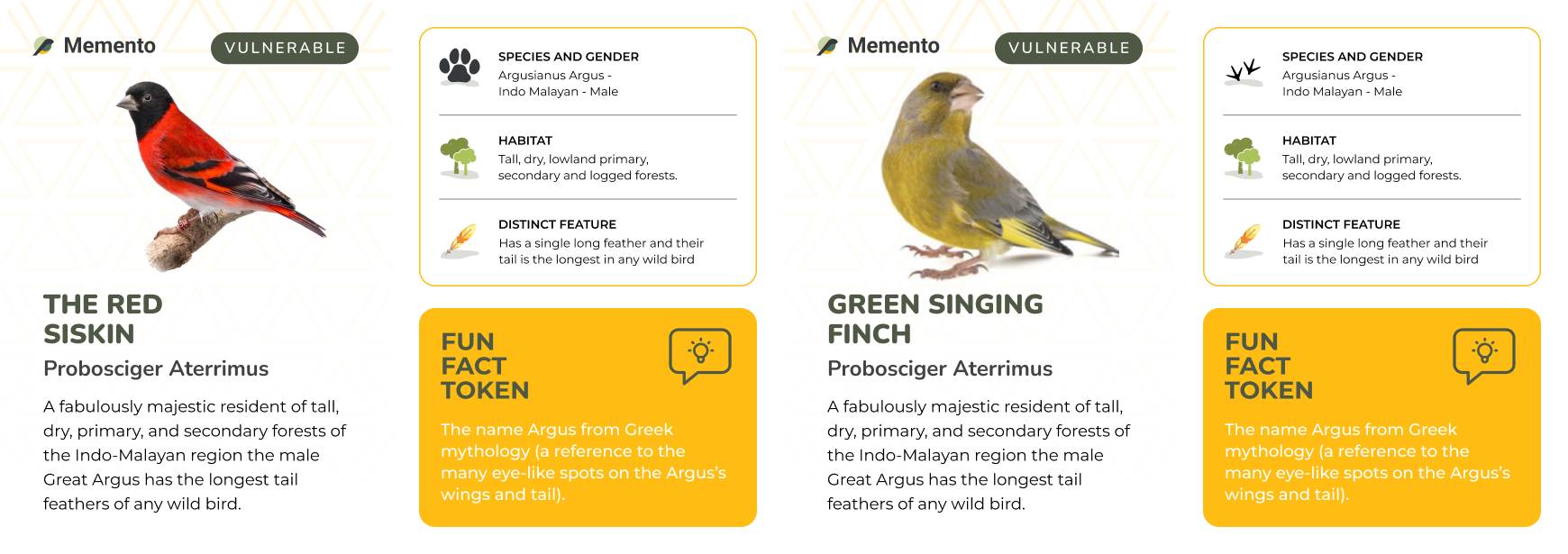
Honored to be the main actor in our demo video — and huge thanks to my teammate Jo for editing the amazing 3D effects! Our group trip to the National Aviary Museum was already such a fun experience on its own.
Our team had an incredible time working on this project, and our design cohort loved our demo day. By scanning the souvenir card with a phone camera, users could see a 3D bird appear in augmented reality. With our custom Instagram filter, people enjoyed interacting with the bird — letting it perch on their hands or fly around them.
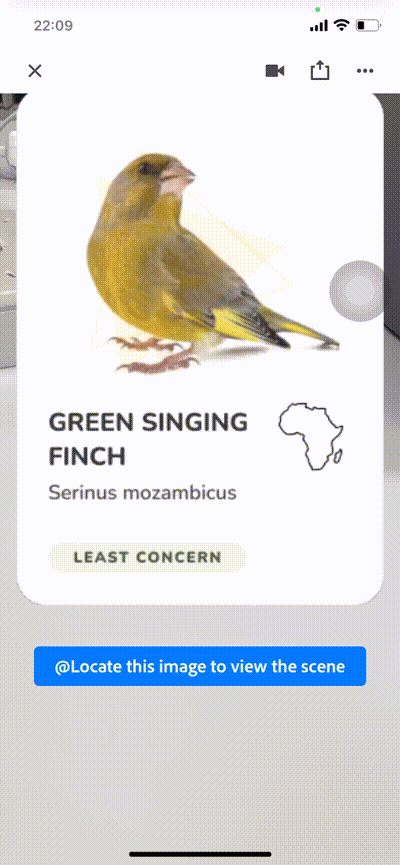
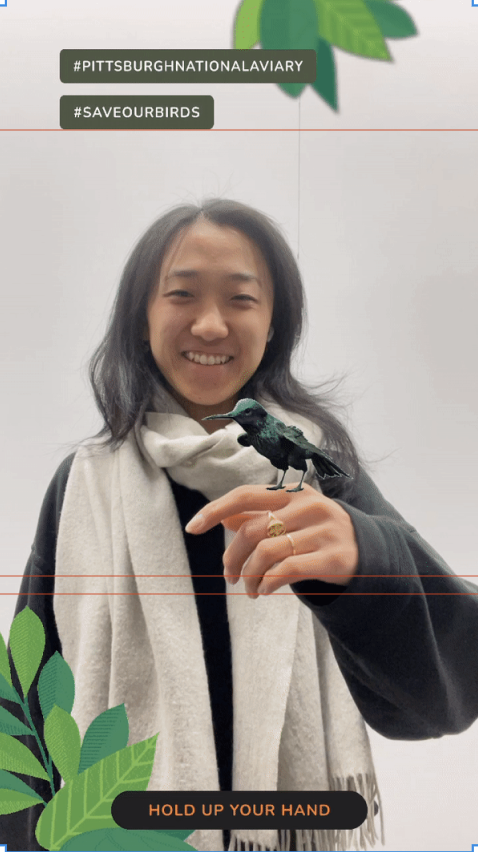
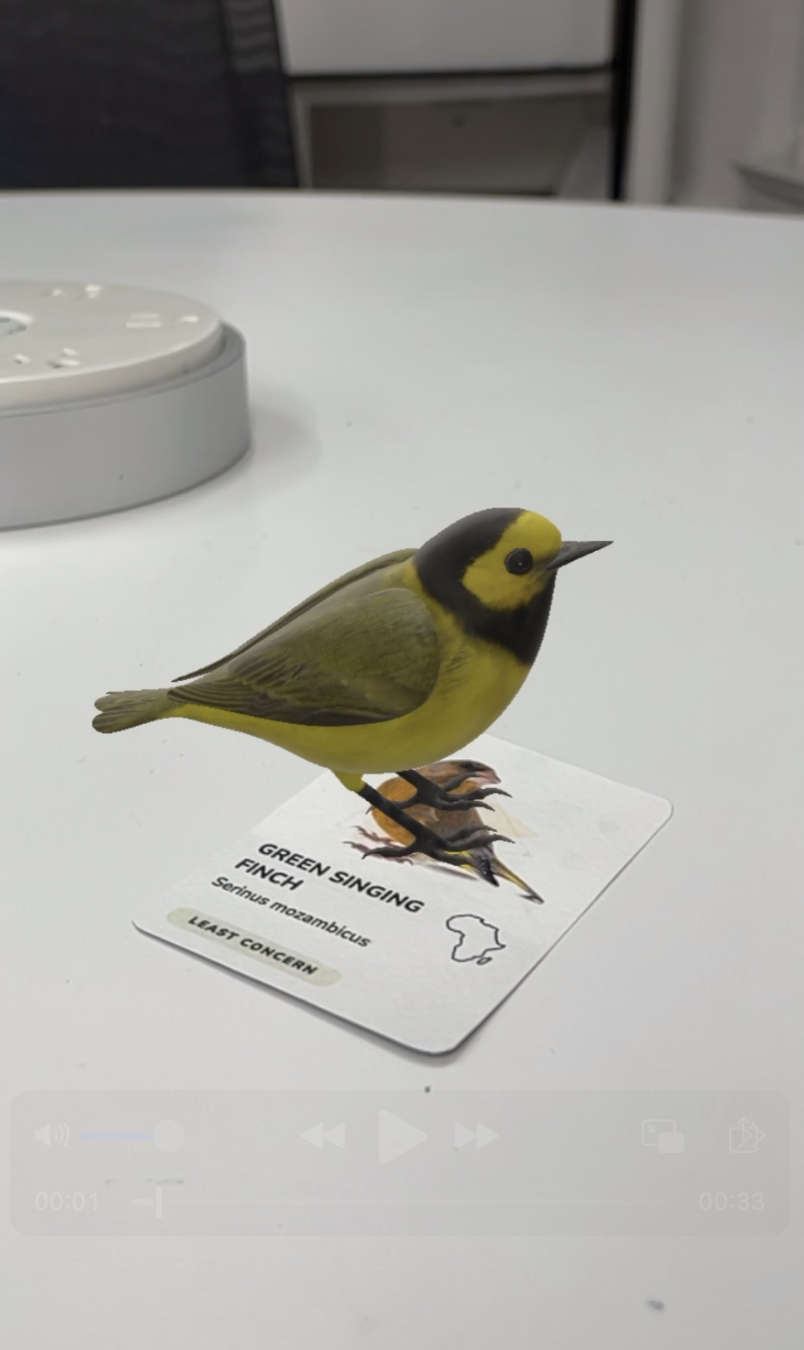
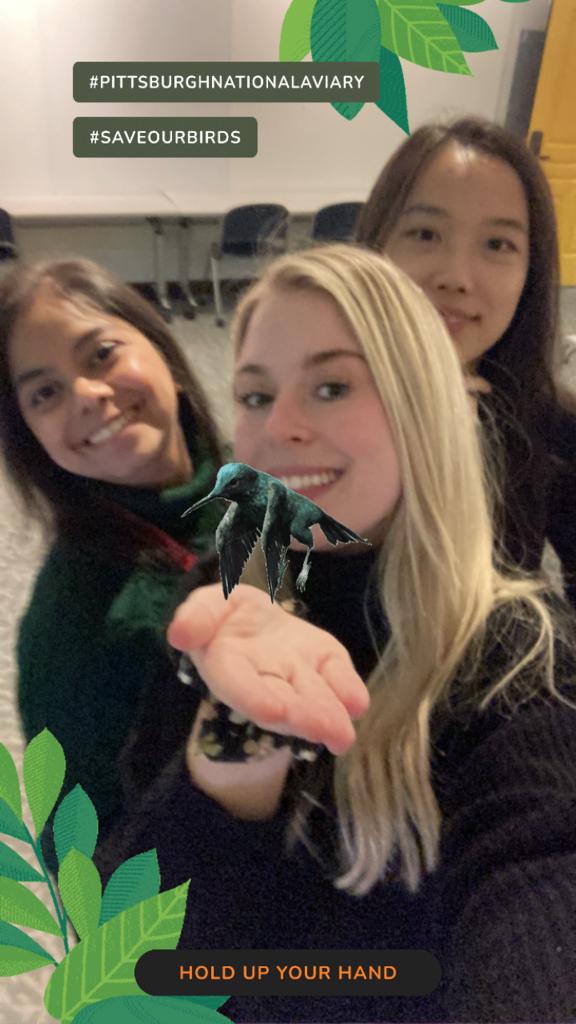
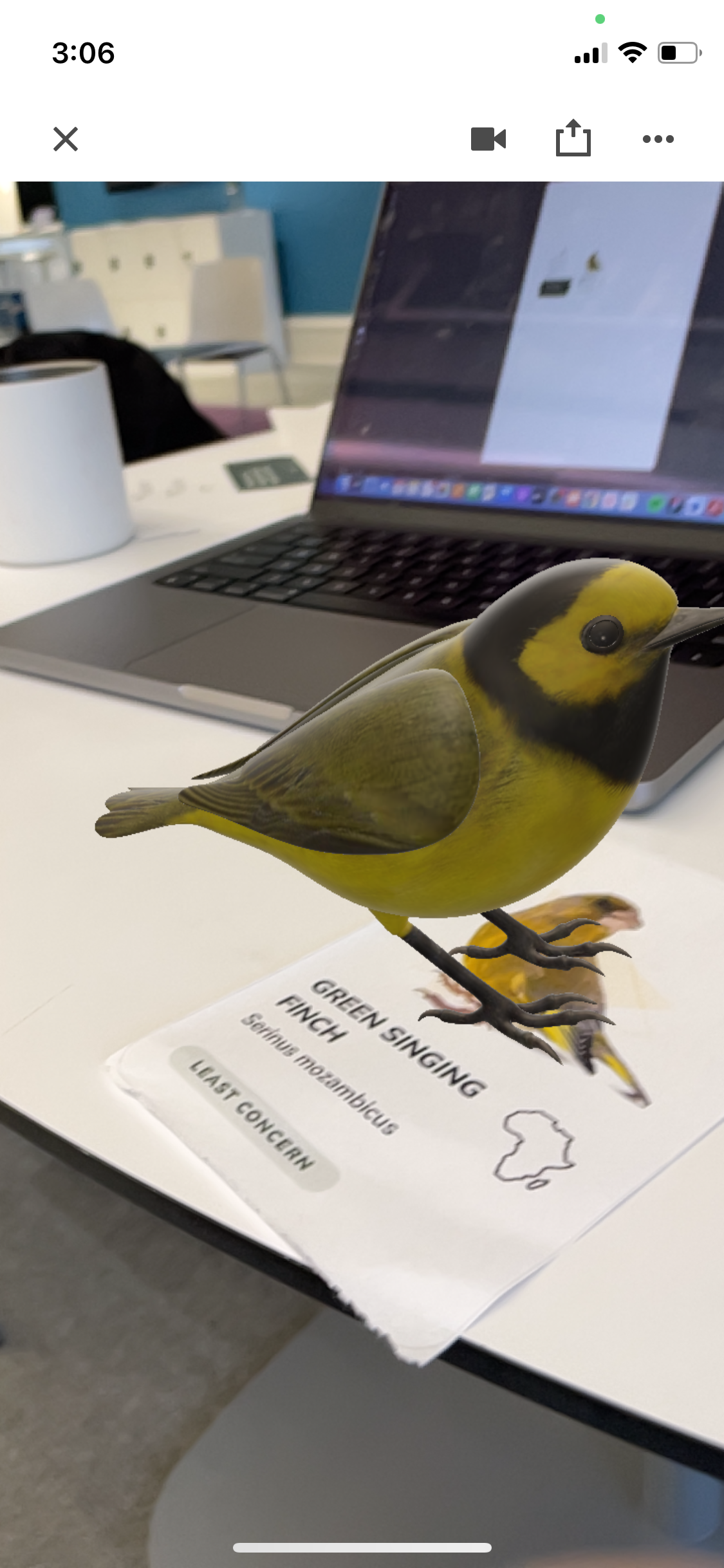
While our current design primarily focuses on stationary birds, we also considered incorporating interactions with moving birds. Although not finalized, we see significant potential for MR technology to enable visitors to learn from birds in motion. Designing for moving birds presents unique challenges, such as tracking flight paths and maintaining comfortable interaction distances, but it also offers an opportunity to create a more dynamic and realistic learning experience. In future iterations, supporting both stationary and moving birds could further enhance engagement, observational skills, and the overall educational impact of the experience.